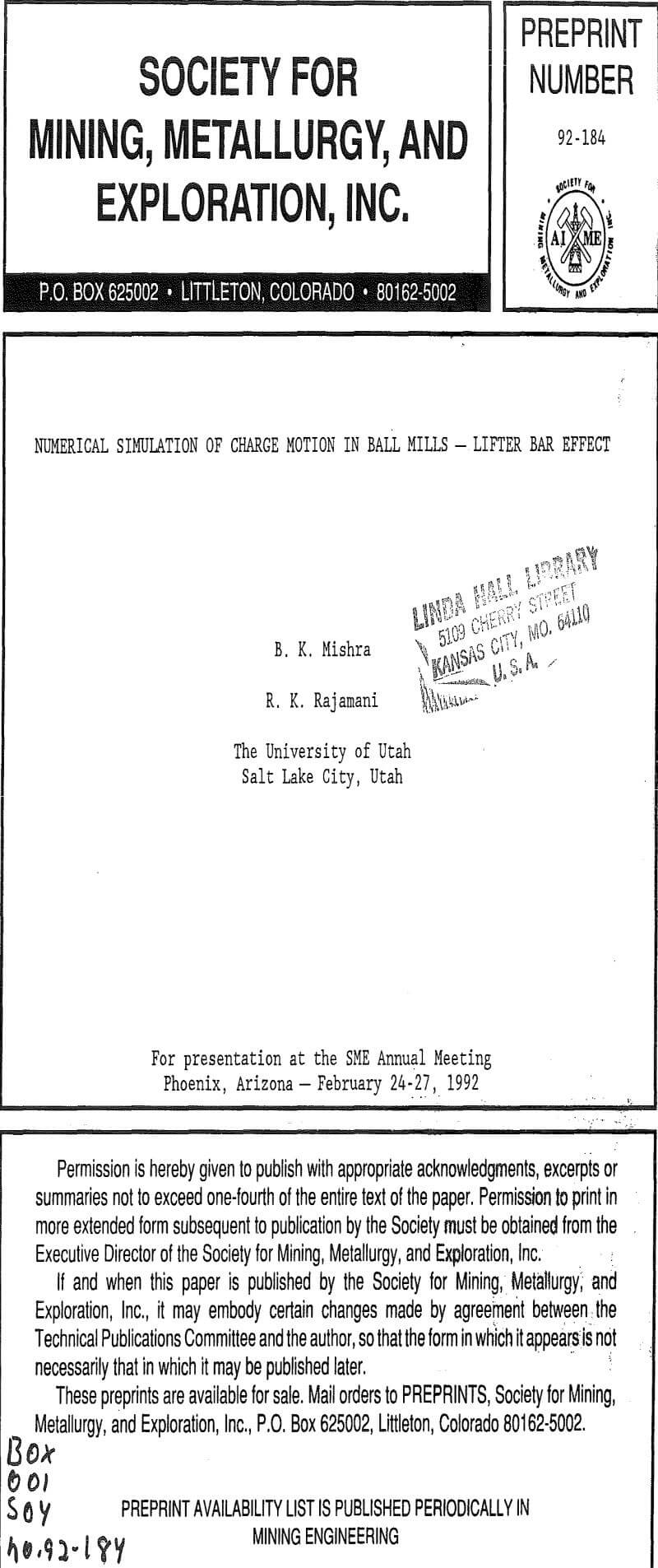Table of Contents
In ball mills, the grinding of ore bodies takes place due to the impact and attrition of the colliding balls. For efficient grinding of hard materials, high-impact velocities are required. For a given rotating speed and filling of the mill, impact velocities of balls and the nature of forces developed inside the mill can be controlled by the most favorable configuration of lifter bars.
The action of lifter bars is best understood by following the motion of ball charge inside the mill. There are two well-known modes in which the ball charge moves inside the mill: cascading and cataracting. The cascading motion of ball charge forms a compressive zone inside the mill where particles may break under slow compression. The cataracting motion, on the other hand, causes the particles to break under high-impact forces. It has been shown that cataracting motion alone is not sufficient for effective grinding. Furthermore, balls that cataract may lead to premature failure of the liners. Therefore, the effective mode of charge motion leading to efficient grinding depends on the mill operating conditions. The purpose of this paper is to study the effect of the configuration and geometry of the lifter bars on the performance of grinding mills.
The Numerical Method
DEM is used to solve problems involving contact and impacts between multiple bodies. It ideally suits the ball mill problem where a quantitative description of the interaction of the grinding media and mill shell is required.
The dynamic equilibrium equation for each ball can be written in the general form as:
![]()
where x is displacement, [M], [C], and [K] are the mass, damping and stiffness matrix, and (f) is the applied load.
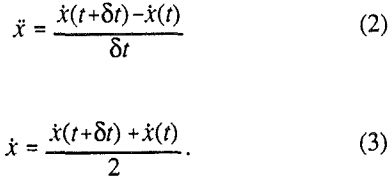
![]()
Numerical Results
The computer code is capable of simulating the dynamic interaction of grinding bodies with lifter bars of different profiles. It is interesting to note, that for the first time, the motion of en masse grinding elements is calculated by varying the lifter-bar profile; the complicated situation of having many balls interacting simultaneously with a lifter bar is tackled.
It is important to study the motion of en masse grinding media for different profiles of the lifter bars. Lifter-bar shape changes after weeks of milling causing a change in the ball trajectories; these changes in turn affect the power draw.
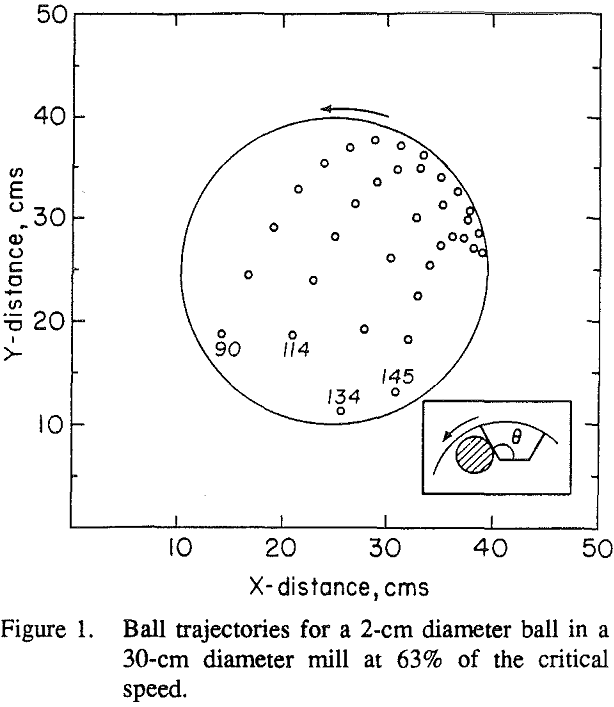
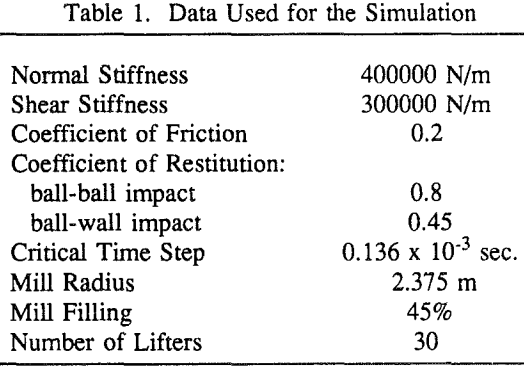
The performance of a ball mill is known to be affected by the design of the liners. A proper liner must key the ball charge to the mill shell in order to maximize the tumbling action with a minimum of slippage, and at the same time it must protect the mill shell from damage.
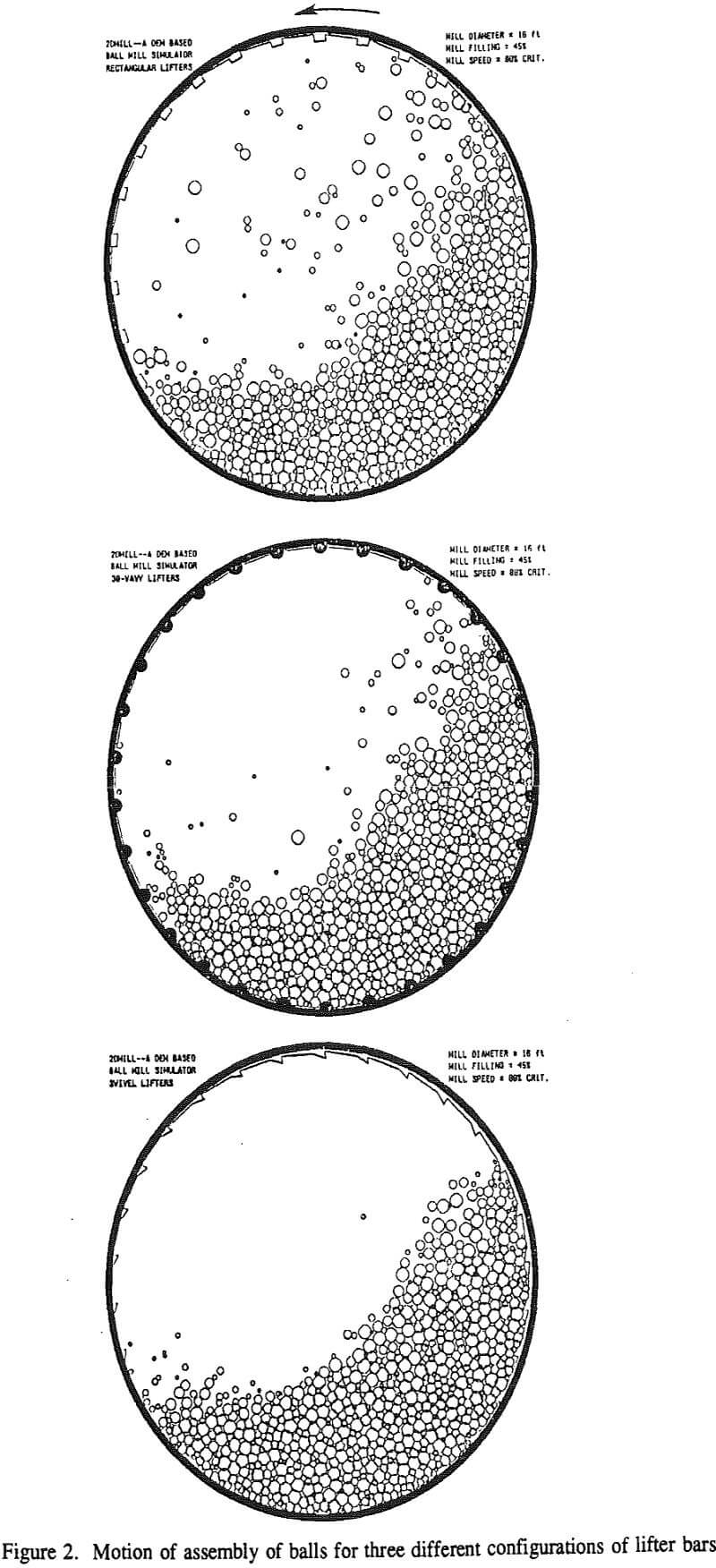
There are two important features that are common to all three figures. First, there is very little impact or energy loss within a radius of one meter, and second, the action of the lifter bar is only limited to the outer few layers of the balls. Between these two extremes, the variation in the energy loss is quite steady.
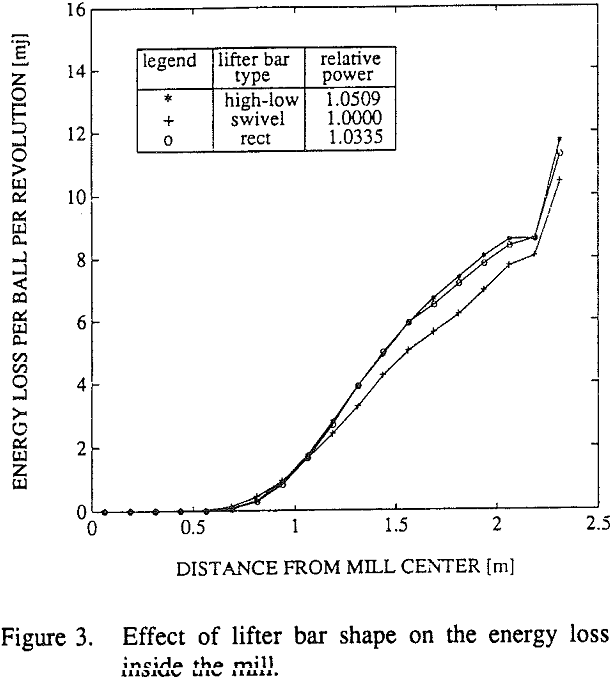
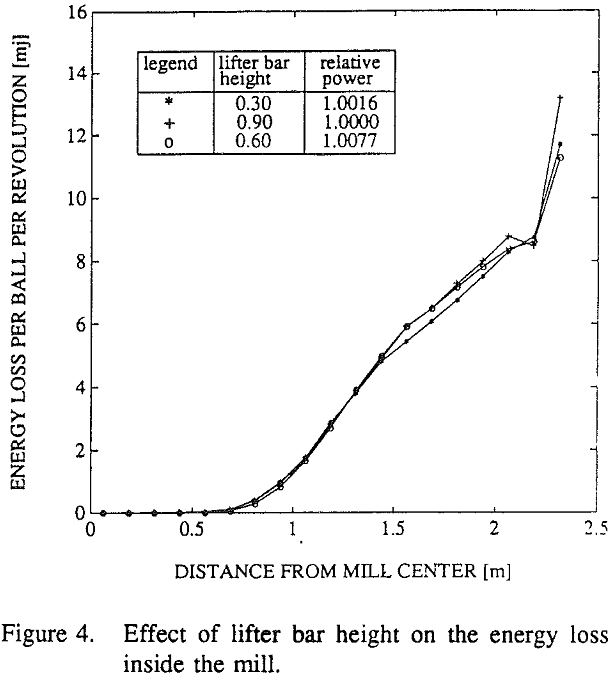
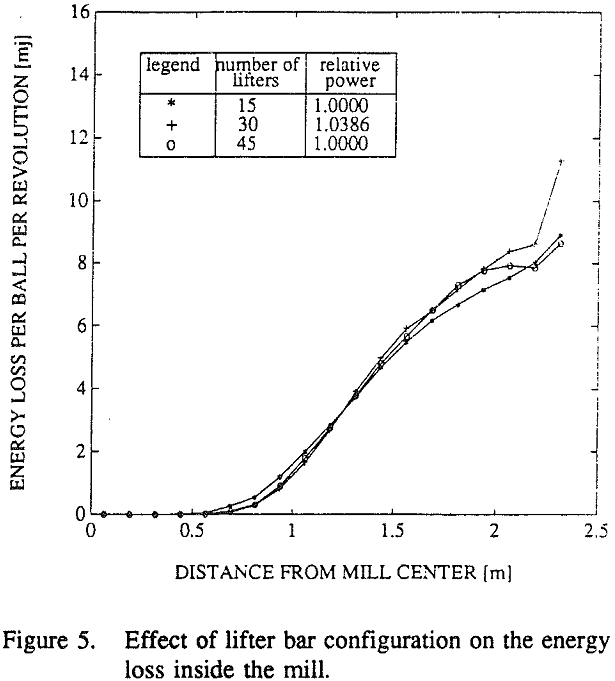
Power Draw
The power draw of a mill is often considered as the basis for comparison between the performance of different mills. Here, the power draw of a real mill is estimated from the two-dimensional torque data as calculated in each simulation. The mill is considered as individual slices in which the ball-charge motion is confined to the radial direction only. After simulating one such slice, the results for the entire mill are calculated knowing the number of slices that make up the real mill.
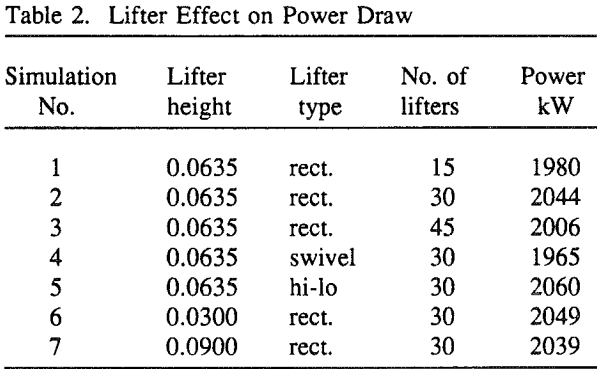
Conclusion
By means of numerical simulation, the effect of liner profile on en masse motion of the ball charge is shown. It is shown that the wear of the lifter bars may eventually change the overall mode of charge motion. Depending on the degree of wear of the liner, the performance of the mill may be affected solely due to the change in the ball-charge motion.
